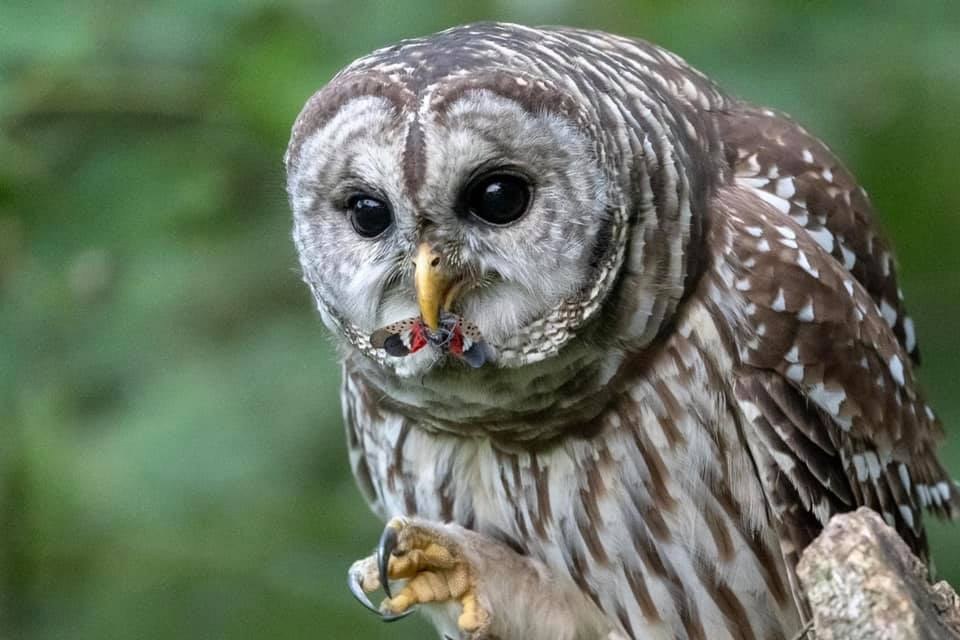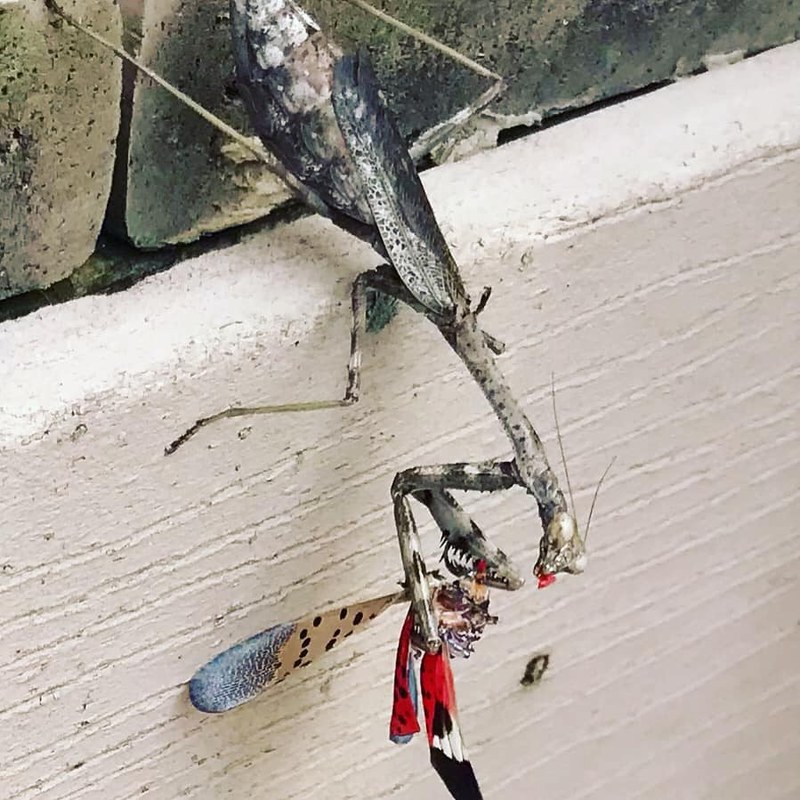Posted: January 31, 2022
CPR member and Entomology graduate student Anne Johnson uses community science to discover key predators of the invasive spotted lanternfly.

An owl eating SLF; Photo credit: Joanne Kline
In the face of a growing insect biodiversity crisis, the development of effective, low-cost and broad-scale biomonitoring efforts can serve as essential indicators of changing insect distributions and behaviors. Biomonitoring allows scientists to determine how different communities, populations or species are responding to changing environmental conditions in both space and time. These efforts can be leveraged to develop, test and assess mitigation measures for both emerging insect pests and for the protection of species of conservation concern.
Biomonitoring can take many different forms and serve many purposes. And for Anne Johnson, a graduate student from Kelli Hoover’s lab in Penn State’s Department of Entomology, a new community science-based biomonitoring initiative has revealed some intriguing results for managing local populations of the invasive spotted lanternfly (SLF).
The spotted lanternfly is a pernicious invasive species that arrived in Pennsylvania in 2014 and has since spread to over half the state and throughout much of the Northeast and Mid-Atlantic. It is an economically concerning pest that uses its piercing-sucking mouthparts to feed on over 70 different plants, which leave plants susceptible to disease and death. Among the preferred plants that the SLF feeds on is the tree of heaven.
‘My research project is looking at toxin sequestration in spotted lanternfly and its effects on predator-prey interactions. We hypothesize that spotted lanternfly can take in and store bitter-tasting chemical compounds from its preferred host, tree of heaven, and use these to defend itself from predation,’ says Johnson.
Johnson and others at Penn State are hopeful that natural, generalist predators, including birds and other insects, will help to consume and suppress emergent SLF populations. However, determining which predators eat SLF, and how frequently, required Johnson to tap into the wider network of local bird and nature enthusiasts through multiple layers of community outreach. This way, ‘we [were] able to get information on far more instances where predation occurred than if just the people in our lab were looking, allowing us to see larger patterns in these interactions,’ says Johnson.
Johnson put out a plea for the public to submit pictures of birds and other insects eating SLF through Facebook, Penn State Extension, local news outlets, and through PA bird watcher and master gardener mailing lists. Since August 2020, Johnson has received 864 unique reports of SLF being consumed by different animals. ‘One challenge I ran into was that I had far more observations submitted than I was expecting and prepared to receive, which was a very nice problem to have!‘


So far, the responses received suggest that native predators could be helpful in managing spotted lanternfly populations. Managing landscapes to support and encourage diverse insect and bird predators of SLF is just one way that we can help to stem the spread and damage of this invasive pest. In the photos submitted, Johnson observed a diversity of birds and other species eating SLF populations, including owls, songbirds, spiders and praying mantises (you can read more by visiting the Facebook page, linked below).
Penn State offers some fantastic resources on landscaping for birds and beneficial insects, which you can find here:
- https://news.psu.edu/story/186941/2002/04/30/landscape-attract-birds-your-yard
- https://extension.psu.edu/landscaping-to-attract-and-conserve-beneficial-insects
- https://extension.psu.edu/attracting-beneficial-insects
And finally, this experiment is ongoing! Do you have any pictures of animals consuming SLF that you’d like to share with Ms. Johnson? If so – feel free to upload your image(s) to their Facebook page or email the Hoover lab directly via birdsbitingbadbugs@gmail.com
Contact Information


